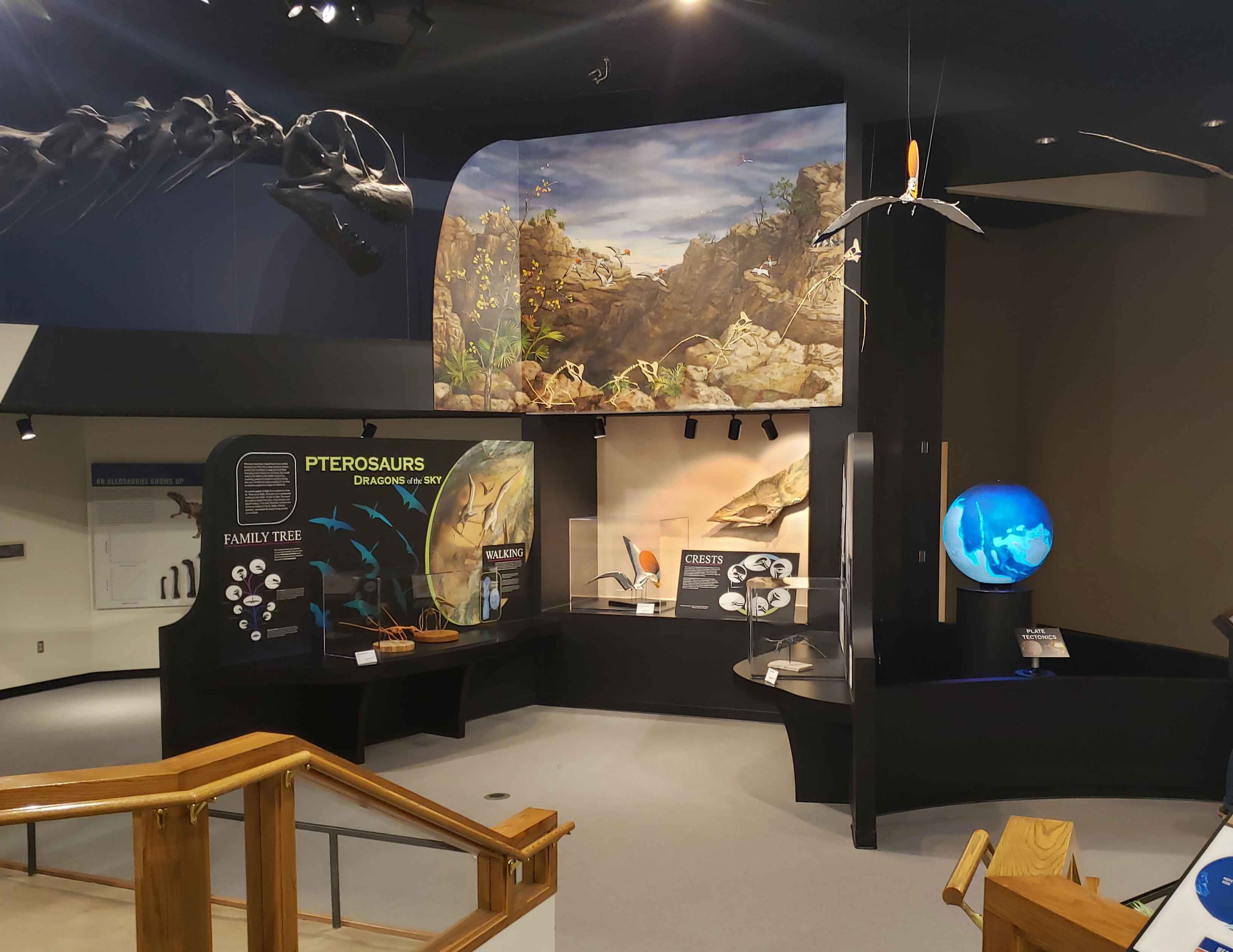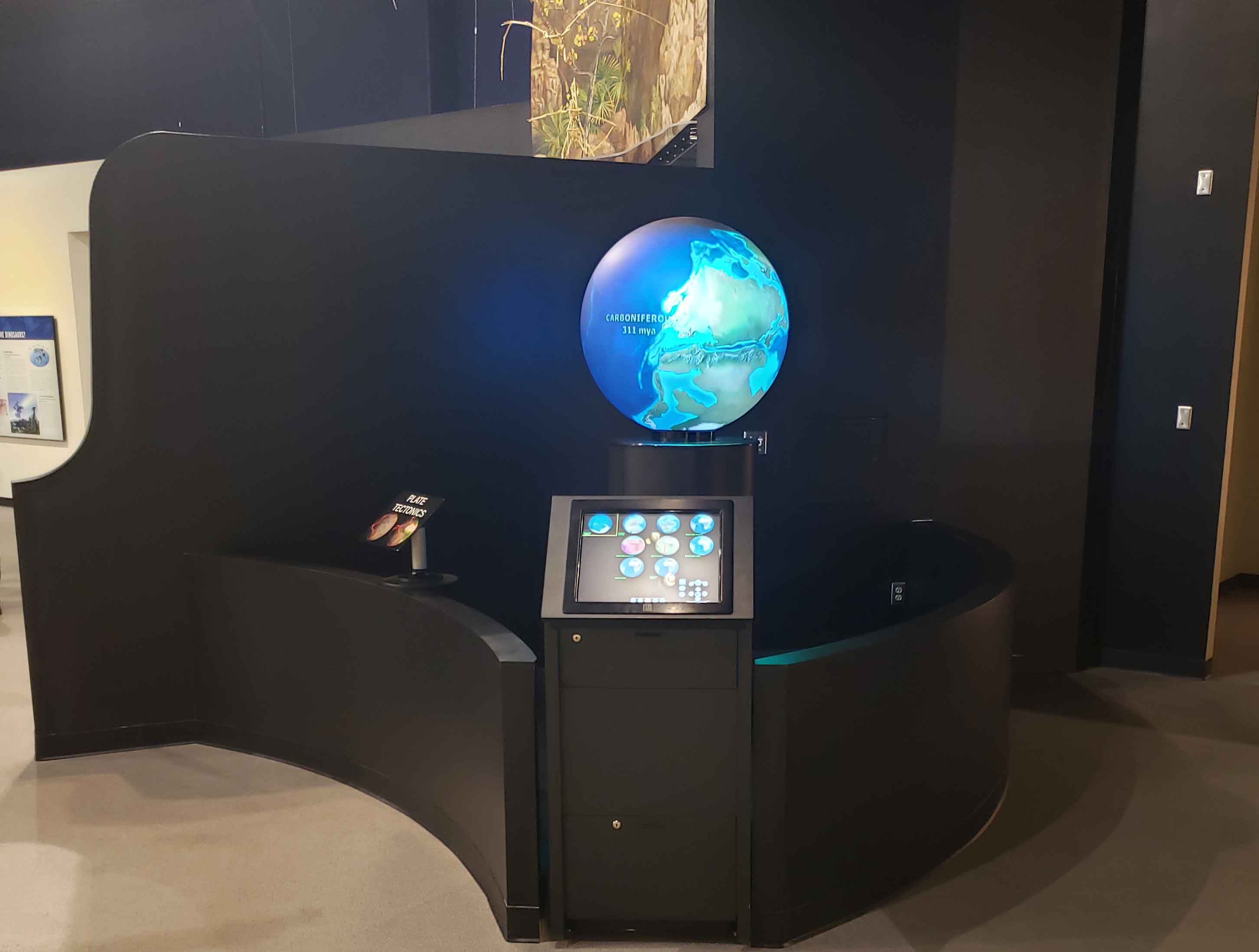A Changing World Update

See the Gallery Guide »
Three major updates to the permanent gallery A Changing World are coming in 2020. These updates will include bringing up-to-date the Omni globe to explore plate tectonics, adding a family tree of the Triassic Archosaurs which include three new dinosaurs, and the addition of the Pterosaurs, the dragons of the air. If it's been a while since you have been to the museum, this will be the ideal time to re-explore and discover this gallery.
Omni Globe
Plate tectonics explain the large-scale motions of earth's outer rigid shell – the lithosphere (the crust and upper mantle). The Lithosphere is not a solid shell – it is broken into smaller moving pieces, call plates. The plates are made of solid rock, and ride on a hotter, softer mantle. The Plates vary greatly in thickness ranging from the nine-mile thick oceanic lithosphere to the 125-mile thick continental lithosphere.

Family Tree of the Triassic Archosaurs
Several early dinosaurs and their relatives have been found in the Triassic deposits of the South Plains, within an hour of Lubbock. Two herbivores (plant-eaters), Technosaurus and Shuvosaurus, are known from an area outside of Post, Texas. The carnivore (meat-eater), Coelophysis, has been found in West Texas, but is much more common in New Mexico. In fact, Coelophysis is the state fossil of New Mexico!
Though all three are similar in size and share some similar characteristics, they represent three distinctly different points along the Archosaur family tree- dinosaurs, their close relatives dinosauriforms, and a group of crocodile ancestors known as poposaurs.
Pterosaurs: Dragons of the Air
The first vertebrate animal to evolve powered flight wasn't the bird or bat, a fuzzy reptile with leathery wings called the Pterosaur. Pterosaurs were the rulers of the sky during Mesozoic Era [251 – 65 million years ago]. Pterosaurs flew by both gliding and flapping their wings to generate lift to travel through the air. They died out with the dinosaurs about 65 million years ago.
Museum at Texas Tech University
-
Address
3301 4th Street, Lubbock, TX 79415 -
Phone
806.742.2490 -
Email
museum.texastech@ttu.edu
